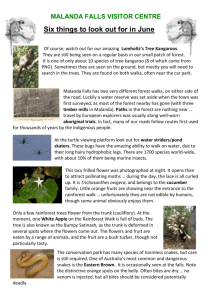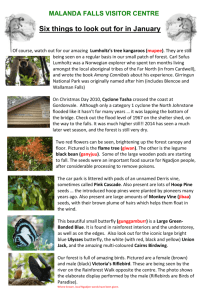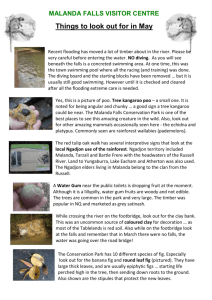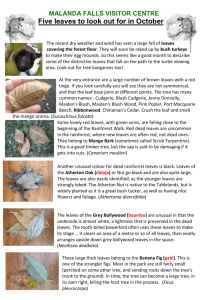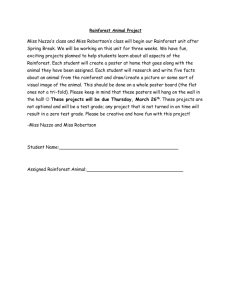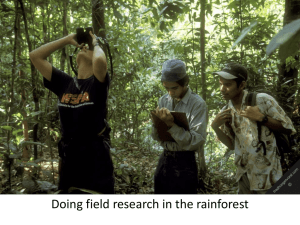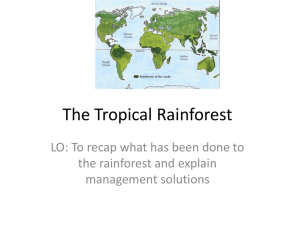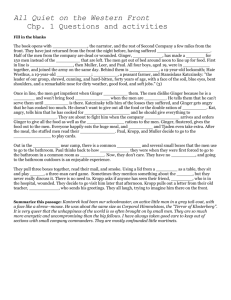MALANDA FALLS VISITOR CENTRE
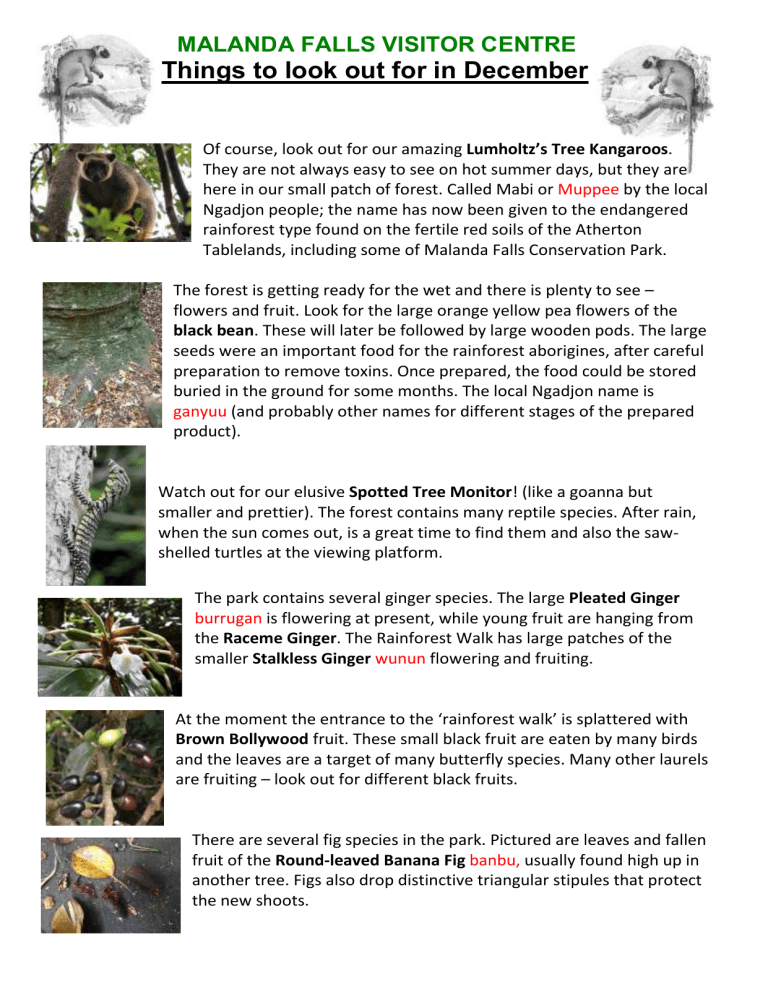
MALANDA FALLS VISITOR CENTRE
Things to look out for in December
Of course, look out for our amazing Lumholtz’s Tree Kangaroos.
They are not always easy to see on hot summer days, but they are here in our small patch of forest. Called Mabi or Muppee by the local
Ngadjon people; the name has now been given to the endangered rainforest type found on the fertile red soils of the Atherton
Tablelands, including some of Malanda Falls Conservation Park.
The forest is getting ready for the wet and there is plenty to see – flowers and fruit. Look for the large orange yellow pea flowers of the
black bean. These will later be followed by large wooden pods. The large seeds were an important food for the rainforest aborigines, after careful preparation to remove toxins. Once prepared, the food could be stored buried in the ground for some months. The local Ngadjon name is ganyuu (and probably other names for different stages of the prepared product).
Watch out for our elusive Spotted Tree Monitor! (like a goanna but smaller and prettier). The forest contains many reptile species. After rain, when the sun comes out, is a great time to find them and also the sawshelled turtles at the viewing platform.
The park contains several ginger species. The large Pleated Ginger burrugan is flowering at present, while young fruit are hanging from the Raceme Ginger. The Rainforest Walk has large patches of the smaller Stalkless Ginger wunun flowering and fruiting.
At the moment the entrance to the ‘rainforest walk’ is splattered with
Brown Bollywood fruit. These small black fruit are eaten by many birds and the leaves are a target of many butterfly species. Many other laurels are fruiting – look out for different black fruits.
There are several fig species in the park. Pictured are leaves and fallen fruit of the Round-leaved Banana Fig banbu, usually found high up in another tree. Figs also drop distinctive triangular stipules that protect the new shoots.
